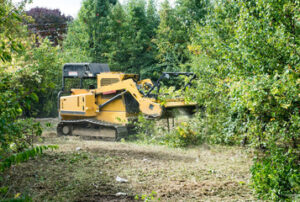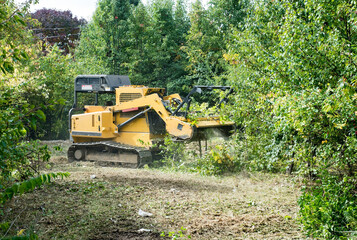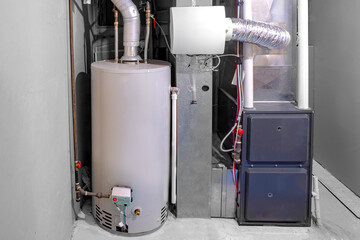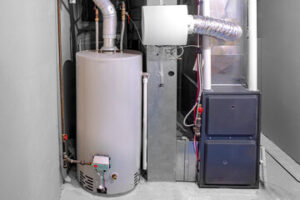Land Clearing Thorndale TX plays a vital role in supporting both environmental health and economic growth. When done responsibly and sustainably, land clearing helps create new opportunities for agricultural production, infrastructure development, and ecological restoration. By removing unwanted vegetation, debris, and invasive species, land clearing enhances soil quality, improves water flow, and promotes the growth of native plant species.
It also creates space for agricultural expansion, urban development, and renewable energy projects, all of which contribute to local and national economies. While land clearing has often been associated with deforestation and environmental degradation, modern methods and regulations ensure that it is carried out in a manner that benefits both the environment and the economy.
One of the most significant environmental benefits of land clearing is the improvement of soil health and fertility. Overgrown vegetation and invasive species can deplete soil nutrients and disrupt the natural balance of the ecosystem. By clearing away these elements, the soil is able to regain its nutrient content, allowing native plants to thrive and improving the overall health of the ecosystem. Additionally, removing invasive species reduces competition for resources, giving indigenous plant species a better chance to flourish. This process enhances biodiversity, strengthens natural habitats, and supports the recovery of ecosystems that have been damaged by environmental stressors.
Proper land clearing also enhances water management and reduces the risk of soil erosion and flooding. Overgrown land with dense vegetation can block natural water channels, leading to poor drainage and increased risk of flooding during heavy rainfall. Removing excess vegetation allows water to flow more freely through natural channels, reducing the likelihood of water stagnation and soil erosion. Improved drainage supports healthier plant growth, prevents waterlogging, and minimizes the loss of topsoil. Furthermore, better water flow contributes to the recharge of groundwater reserves, supporting long-term water availability for agricultural and domestic use.
From an ecological standpoint, land clearing creates opportunities for habitat restoration and the reintroduction of native species. In areas where invasive plants and overgrown vegetation have overtaken natural habitats, strategic clearing helps restore balance to the ecosystem. This allows native plants and animals to reclaim their natural habitats, improving biodiversity and strengthening the resilience of local ecosystems. Managed reforestation and planting of native species further enhance the ecological value of cleared land, creating a more stable and diverse environment. The removal of dead or diseased trees also prevents the spread of pests and diseases, supporting the health of surrounding plant and animal life.
Land clearing is particularly beneficial for agricultural development. Clearing land for farming increases the availability of arable land, allowing farmers to expand production and improve food security. Enhanced soil quality and improved water management create optimal conditions for crop cultivation, leading to higher yields and better-quality produce. The expansion of agricultural land also supports the development of new farming techniques, including crop rotation, sustainable irrigation, and organic farming practices. Increased agricultural productivity contributes to local and national food supply chains, reducing dependence on imported goods and supporting rural economies.
Economic growth is another major benefit of land clearing. Creating new land for residential, commercial, and industrial development generates employment opportunities and stimulates economic activity. Construction projects, infrastructure development, and new business ventures provide jobs for local communities and create demand for materials, equipment, and services. The increase in economic activity boosts local revenue through taxes and fees, supporting public services and infrastructure improvements. Additionally, the development of renewable energy projects on cleared land, such as solar and wind farms, creates long-term economic benefits by reducing energy costs and supporting energy independence.
The timber and forestry industries also benefit from responsible land clearing. Harvesting timber from cleared land provides raw materials for construction, manufacturing, and export markets. Sustainable forestry practices ensure that timber is harvested responsibly, with reforestation efforts helping to maintain ecological balance and long-term resource availability. The forestry sector supports jobs in logging, transportation, and processing, contributing to local and national economies. Responsible management of forestry resources ensures that land clearing remains a sustainable and profitable industry while preserving natural ecosystems.
Land clearing also supports infrastructure development and urban expansion. Creating space for new roads, bridges, and transportation networks improves connectivity and facilitates economic growth. Improved infrastructure reduces travel time, increases access to markets and services, and supports the movement of goods and people. Residential and commercial development on cleared land meets the growing demand for housing, retail spaces, and industrial facilities, supporting population growth and urbanization. Modern urban planning integrates green spaces and sustainable design principles into new developments, balancing economic growth with environmental preservation.
In addition to economic and environmental benefits, land clearing plays a key role in fire prevention and management. Overgrown vegetation and dry plant material increase the risk of wildfires, which can cause significant damage to ecosystems, property, and human life. Strategic land clearing removes flammable materials, creates firebreaks, and reduces the intensity and spread of wildfires. This proactive approach to fire management protects natural habitats, reduces the risk of property damage, and improves public safety. Controlled burns and vegetation management further enhance the effectiveness of fire prevention efforts.
Modern land clearing methods emphasize sustainability and environmental responsibility. Advanced machinery and techniques allow for precise clearing with minimal disruption to the surrounding environment. Mulching and chipping of cleared vegetation provide organic material for soil improvement and erosion control. Eco-friendly herbicides and natural pest control methods reduce the impact of clearing on local wildlife and plant life. Land restoration efforts following clearing projects ensure that the ecosystem remains balanced and capable of sustaining long-term growth. Environmental impact assessments and regulatory oversight help ensure that land clearing projects meet sustainability standards and minimize ecological harm.
Land clearing also facilitates the development of renewable energy projects, including solar and wind farms. Creating open spaces for solar panel installations and wind turbines supports the transition to clean energy and reduces reliance on fossil fuels. Renewable energy projects on cleared land generate long-term economic benefits through job creation, energy production, and reduced energy costs. The integration of renewable energy infrastructure into cleared land supports environmental sustainability and contributes to the reduction of greenhouse gas emissions.
Recreational and conservation projects benefit from strategic land clearing as well. Creating space for parks, hiking trails, and wildlife reserves enhances public access to nature and supports outdoor recreation. Restoring natural habitats and reintroducing native species create opportunities for eco-tourism and environmental education. Conservation projects on cleared land protect endangered species, promote biodiversity, and enhance the ecological value of the area. Public access to natural spaces improves physical and mental well-being, strengthens community connections, and fosters greater appreciation for environmental conservation.
The economic benefits of land clearing extend beyond immediate development and production. Increased property values, improved infrastructure, and enhanced agricultural productivity create long-term economic stability and growth. Job creation in construction, agriculture, forestry, and renewable energy supports local economies and provides stable employment opportunities. Increased tax revenue from property development and business activity supports public services, infrastructure improvements, and community development. The multiplier effect of land clearing projects generates economic activity in related industries, including transportation, manufacturing, and retail.
Public and private sector collaboration plays a crucial role in ensuring that land clearing projects are carried out responsibly and sustainably. Government regulations, environmental impact assessments, and community input help shape land clearing projects that balance economic development with environmental preservation. Public-private partnerships support infrastructure development, renewable energy projects, and conservation efforts on cleared land. Community involvement in land clearing projects fosters a sense of ownership and responsibility, ensuring that the benefits of land clearing are shared by all stakeholders.
In conclusion, land clearing, when conducted responsibly and sustainably, creates significant environmental and economic benefits. Improved soil health, enhanced water management, and restored ecosystems support biodiversity and ecological resilience. Increased agricultural productivity, infrastructure development, and renewable energy projects contribute to long-term economic growth and stability. Responsible land clearing practices ensure that natural resources are preserved, ecosystems are protected, and economic opportunities are maximized. By balancing development with environmental stewardship, land clearing serves as a valuable tool for supporting both human progress and ecological health.





